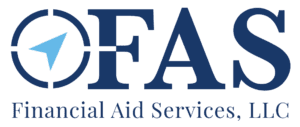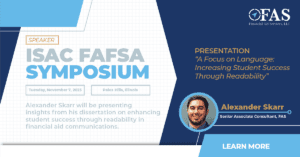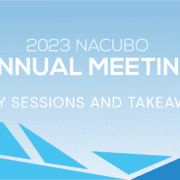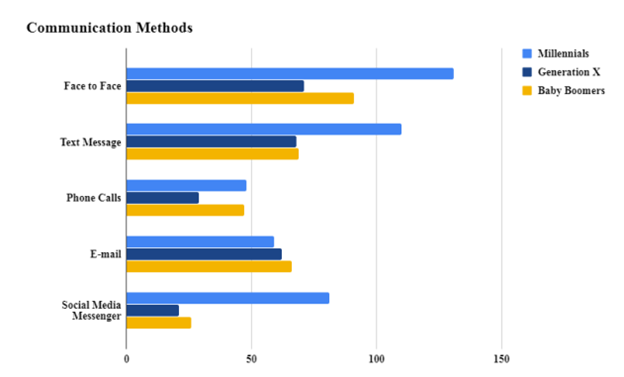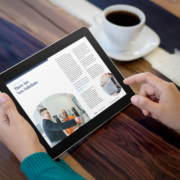Resumption of Student Loan Repayment
By: Sean Hudson, Sr. Consultant FAS
In March 2020, the Federal Government suspended Federal Student Loan payments to help borrowers struggling with the impact of the COVID-19 Pandemic. This provided relief to over forty million borrowers experiencing a reduction in income or even job loss due to the Pandemic. It also helped families overcome the sudden increase in the cost of basic needs, such as food, fuel, and housing. Now that the Pandemic has waned, borrowers must prepare for Federal Student Loan repayments to begin again. Are borrowers prepared? Colleagues at Default Prevention Companies and Loan Servicers all state that borrowers are confused about what resumption means as repayment looms.
When Does Repayment Begin?
The first question for borrowers is when does repayment really begin? Borrowers are unsure if it is August, September, or October. The current administration previously announced the student loan payment pause—which has been extended eight times—would finally end 60 days (about 2 months) after the Supreme Court ruled that the administration’s student loan forgiveness program would not be allowed (June 30, 2023). To add to the confusion the administration is offering a 12-month grace period on reporting missed student loan payments to the three credit agencies. Some students see this as another deferment, which it is not. Then, will they need to reapply for the payment plan they were on prior to the pandemic? If they had auto-debt set-up, will they need to re-elect that option? The Federal Government also changed some of the loan services during the pandemic, meaning some borrowers are now working with different companies.
One of the other major concerns is the re-incorporation of student loan payments into borrower’s monthly budgets. Will borrowers be able to afford their payments when they have become accustomed to not having this debit each month? Borrowers changed their lifestyles and spending habits. How many borrowers will struggle with payments? How many will go into default? How will this impact the US economy when borrowers have less money to spend on other things?
Understanding the Repayment Plan
Even for Financial Aid Administrators, the changes will be disorienting. What income-based repayment options do students have? Prior to the pandemic, we had the Income-Contingent Repayment Plan (ICR), Income-based Repayment Plan (IBR), Pay As You Earn (PAYE) Repayment Plan, and REPAYE. Now the Administration has introduced the Saving on Valuable Education (SAVE) Plan. Which one best fits borrowers/which ones do they qualify for? The Administration will replace REPAYE with the new SAVE Plan, automatically enrolling REPAYE borrowers. SAVE offers the lowest repayment amount and is accessible to all borrowers, eliminating the need for loan consolidation to join specific IBR Plans.
What will be the impact?
How does the loan payment pause impact borrowers previously on income-based repayment plans that had loans forgiven after a set number of payments? Do borrowers need to pay for an extra three years? The current Administration confirms that the COVID pause will be included in the repayment period, so no extra three years of payments are required.
To help borrowers, default management companies and the Federal Loan Servicers started contacting students months ago informing them of the restart of payments. I was told that extra staff will be brought on to help with the influx of questions that borrowers will have as the restart nears. Borrowers are being warned that it may take multiple attempts to speak with a representative at their service, so they should start early. Do not wait until October to start looking at repayment options. Borrowers are encouraged to log into the StudentAid.gov site or their Servicer’s website to utilize online tools as much as possible.
Guarding against fraud
There is a concern that borrowers will be defrauded by debt relief companies and criminals posing as servicers. I even received a letter from a fraud company offering to help me with the repayment of my loans. The letter had a seal in the corner that made it look like a legitimate Federal document. I was told that these frauds have steadily increased over the summer as we near the payment restart. Borrowers need to know who their Federal Servicers are and only discuss their information with people they can trust. I have been reaching out to my friends and family warning them of the scams.
Simplifying Loan Repayment
Finally, I wish the government would have used this opportunity to simplify loan repayment and follow other countries in the world like Australia that have an easy-to-understand income-based plan as the standard repayment plan. Since IBR seems to be the future, let us move in that direction and avoid the multiple repayment plans that just cause more confusion. I hope the early and ongoing efforts of the Federal Government, Federal Loan Servicers, Loan Default Management Companies, organizations such as NASFAA (National Association of Student Financial Aid Administrators), and colleges/universities make for a positive transition back to repayment for the millions of borrowers!
